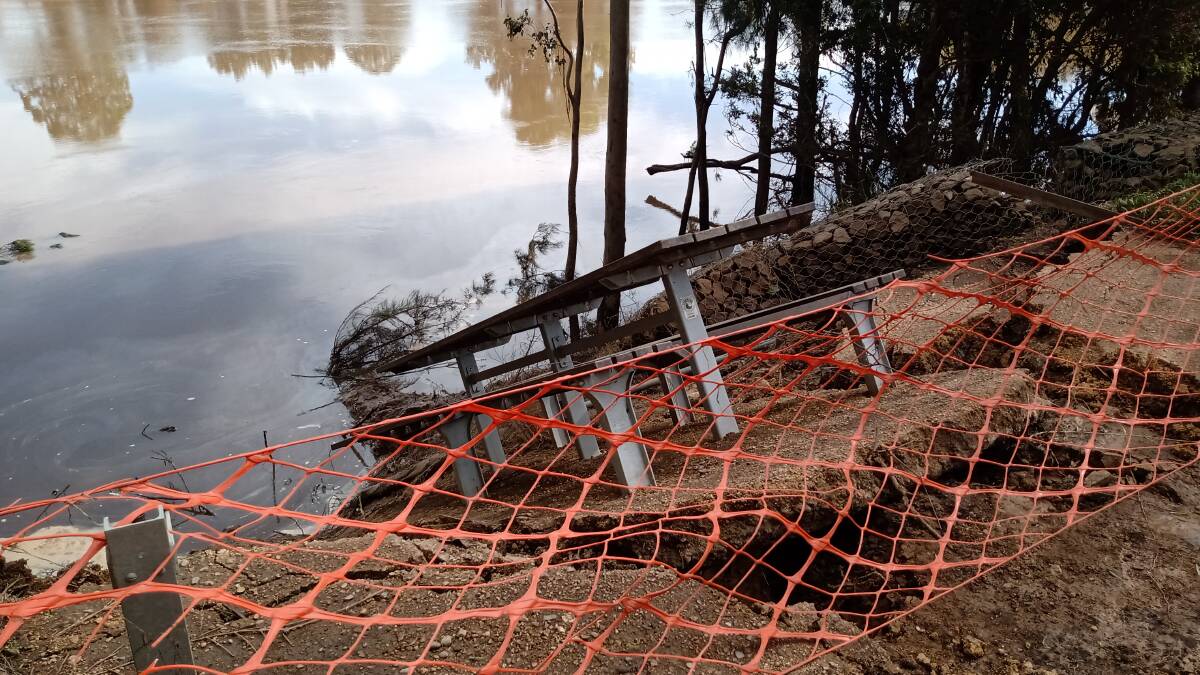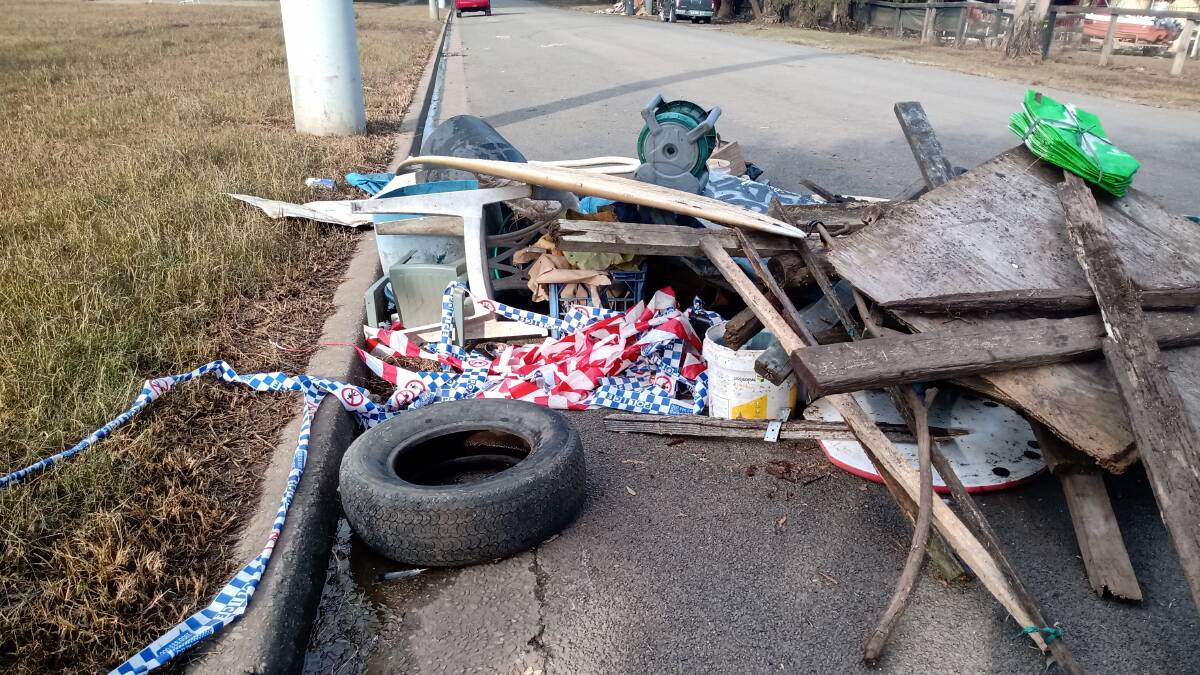It's likely over 1,000 Hawkesbury homes impacted by flood will be assessed by insurers, but it's still too early to ascertain how much the flood crisis will cost or how many homes were affected.
Between just two major home insurers contacted by the Gazette, there were 903 claims for property damage in the Hawkesbury area as of Thursday, March 10, but claims were still being lodged.
NRMA Insurance had received over 612 claims in the Hawkesbury region, mostly for property damage.
An NRMA Insurance spokesperson said the company was yet to determine the overall financial cost of the disaster.
"With most of the flood impacted communities still in the recovery phase, it is still too early to know the impact of this severe weather event on premiums," the spokesperson said.
"We understand the importance of insurance being as affordable as possible for people and communities, and that's why we've been highlighting the importance of greater investment in mitigation initiatives to protect lives and property.
"This includes building or upgrading infrastructure such as levees, household resilience programs and better land use planning to help protect communities before disasters strike."
The Hawkesbury claims joined thousands across NSW and Queensland impacted by the March 2022 flood events.
Allianz Australia Insurance had received 12,800 overall claims as of last Thursday, with 291 of these from Hawkesbury postcodes.

Many of the overall claims involved water inundation from one or more of rainwater runoff, flash flooding or riverine flooding.
"It is too early to estimate the cost of the current flooding event because access to some properties is yet to be obtained and assessors haven't been able to attend all claimants' properties," an Allianz spokesperson said.
"We expect more claims to come in over the coming weeks as people return to their homes and assess the damage."
The Allianz spokesperson said that, among other factors, insurers set premiums on an assessment of the frequency and severity of weather events, including floods, particularly drawing on past claims experience. Therefore, that floods will occur, was already factored into premiums.
"It is too early to know how the current event will impact premiums because the unprecedented flooding in some areas will likely result in changes to some flood maps and/or insurer flood risk ratings, after which premiums can be reviewed," the Allianz spokesperson said.
Factoring in only the claims lodged to last Thursday, the Insurance Council of Australia (ICA) had estimated that flooding in NSW would cost insurers $663 million and in Queensland it would cost $1.107 billion.
Under the ICA's Catastrophe Protocol, insurers triage claims to deal with the most urgent and severe first. This means some policyholders with claims that are less severe (ie, their home is habitable) may need to wait a few weeks until an assessor is able to review their claim.
ICA said that as clean-up moved into its second week in Brisbane and Northern Rivers and was underway in western Sydney, insurers were cautioning that global materials shortages and local labour constraints would have an impact on the rebuild and recovery timeframe.

Andrew Hall, CEO, Insurance Council of Australia, said the Insurance Council welcomed comments by Prime Minister Scott Morrison last Wednesday that the Federal Government would focus on investing in infrastructure to make communities more resilient to extreme weather events like these floods.
"The Insurance Council and insurers have been calling for an increase in Federal Government investment in this area to $200 million per year, matched by the states and territories," Mr Hall said.
"We have previously welcomed commitments also made by the Federal Opposition to increase this investment.
"Last month we released our Building a More Resilient Australia election platform and a supporting report from actuarial consultants Finity which highlighted Lismore as one of nine locations in need of urgent flood mitigation infrastructure.
"This infrastructure and mitigation investment is vitally important to prevent future harm and devastation to these communities, as we know flood events will inevitably repeat."
The Building a More Resilient Australia report called the 2021 Hawkesbury floods - which reached 12.92 metres at Windsor and were almost a metre lower than the 2022 peak of 12.80 metres - "catastrophic" in that many home-owners could not afford to take out insurance.
READ MORE:
"While the March 2021 flood was described as a 1-in-100-year event, the occurrence of flooding in the region with peaks above 10 metres are far more common than that," the report stated.
"In the wake of the 2001 flood it was clear some residents had chosen not to take out flood cover or not to insure at all because of the cost, which could be as much as $30,000 a year for home and contents cover including flood.
"This cost is solely attributable to the risk profile of those flood exposed properties.
"The cost of protection from these events is beyond the capacity of occupants and the resulting impact of the event is therefore catastrophic."
The report stated that though flooding in the Hawkesbury-Nepean region is not an uncommon occurrence, there are 70,000 residents already living on the floodplain and the New South Wales Government has plans to increase that to 130,000 by 2050.
What to do if your property has been impacted by flooding and storms (information supplied by Insurance Council of Australia):
- You can start cleaning up but first take pictures or videos of damage to the property and possessions as evidence for your claim
- Keep samples of materials and fabrics to show your insurance assessor
- Remove water damaged goods from your property that might pose a health risk, such as saturated carpets and soft furnishings
- Make a list of each item damaged and include a detailed description, such as brand, model, and serial number if possible
- If water has entered the property, do not turn on your electricity until it has been inspected by an electrician
- Store damaged or destroyed items somewhere safe where they do not pose a health risk
- Speak to your insurer before you attempt or authorise any building work, including emergency repairs, and ask for the insurer's permission in writing. Unauthorised work may not be covered by your policy
- Do not throw away goods that could be salvaged or repaired


